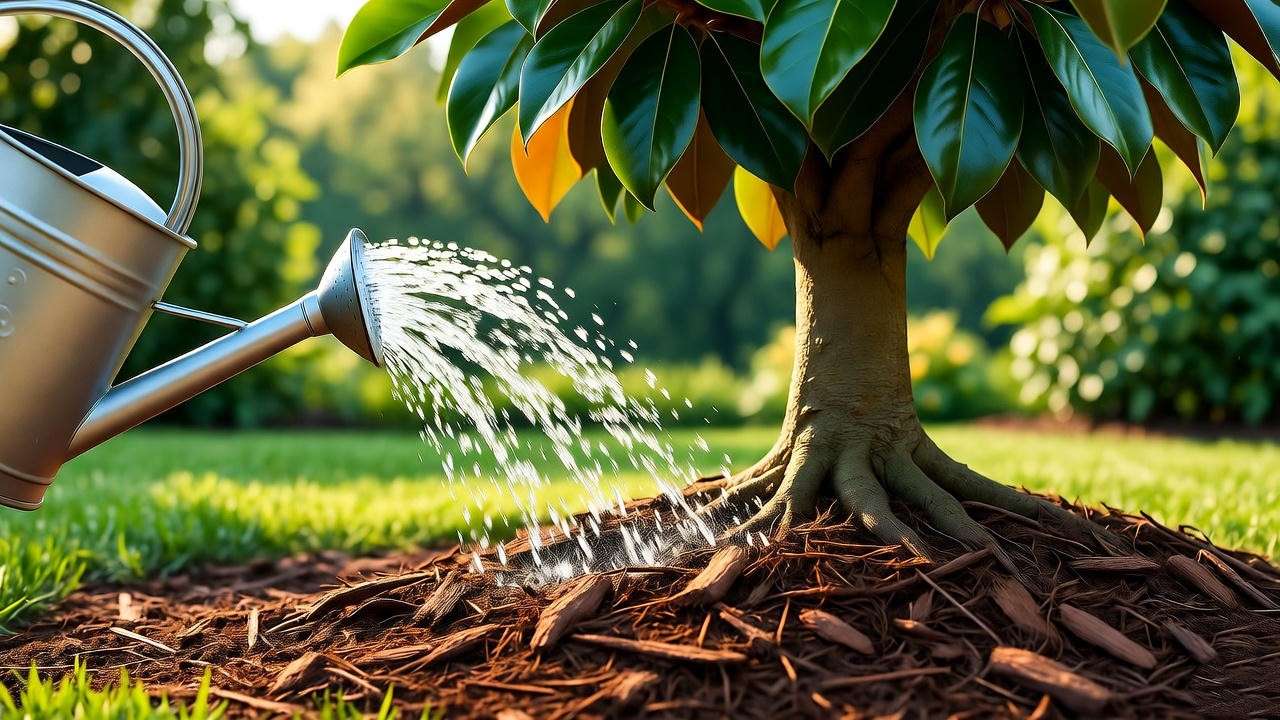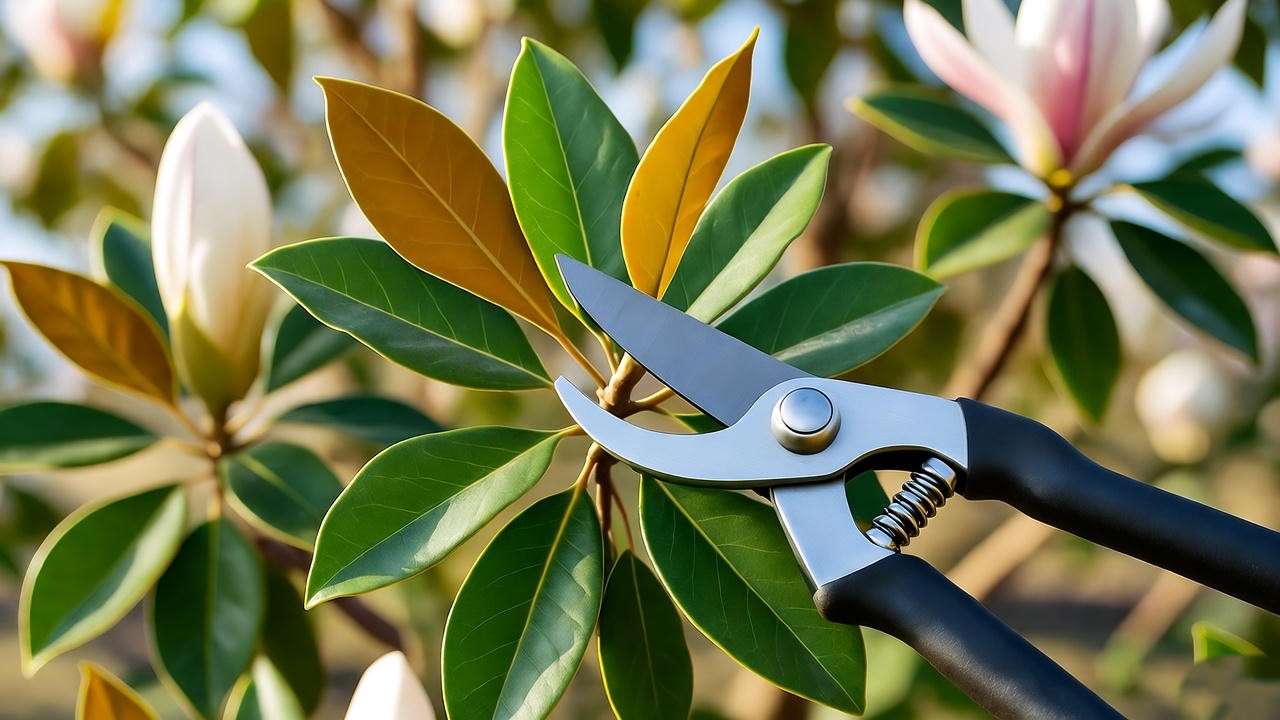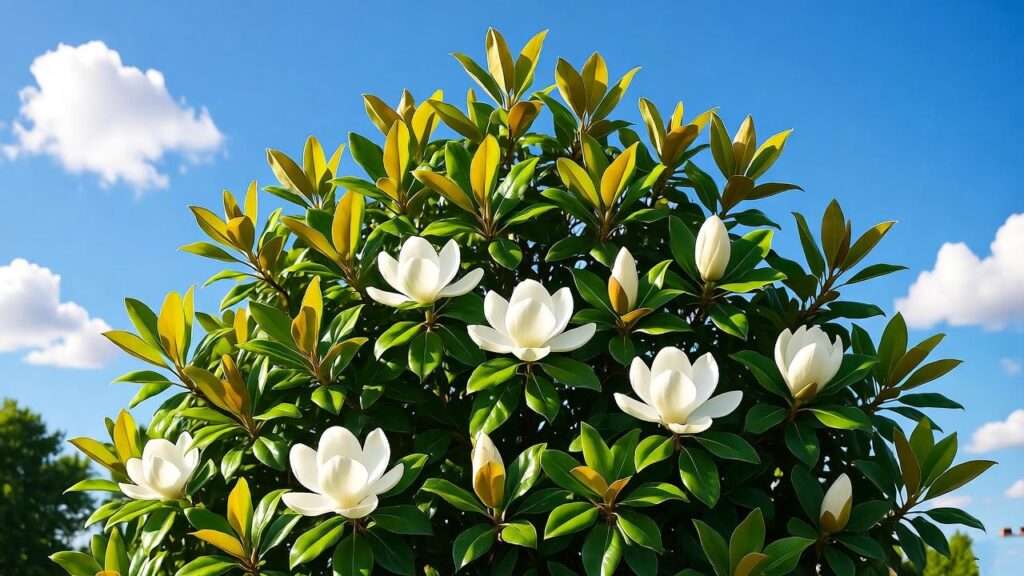Imagine your garden bursting with the vibrant blooms and lush foliage of magnolia planten, their fragrant flowers transforming your outdoor space into a serene oasis. Whether you’re a beginner or a seasoned gardener, growing magnolia planten can feel like a rewarding journey — but only if you know the right steps to ensure their health and beauty. This comprehensive guide, crafted by a horticulture expert with over 15 years of experience in tree and plant care, unveils seven essential tips to help you cultivate thriving magnolia planten. From choosing the perfect variety to mastering long-term care, we’ll cover everything you need to create a stunning display that elevates your garden year-round. Let’s dive into the world of magnolia care and unlock the secrets to vibrant, healthy trees! 🌳
Understanding Magnolia Planten: A Quick Overview 🌟
What Are Magnolia Planten?
Magnolia planten belong to the Magnolia genus, a diverse family of over 200 species of flowering trees and shrubs. Known for their large, glossy leaves and spectacular blooms, magnolias range from evergreen giants like Magnolia grandiflora to compact deciduous varieties like Magnolia stellata. These plants are celebrated for their ornamental appeal, with flowers in shades of white, pink, purple, and yellow that often emit a sweet, citrusy fragrance. Originating from Asia and the Americas, magnolias have been cultivated for centuries, adding elegance to gardens worldwide.
Whether you’re drawn to the bold, creamy blooms of the Southern Magnolia or the star-shaped flowers of the Star Magnolia, there’s a variety for every garden. Magnolias thrive in various climates, typically USDA hardiness zones 5-9, making them a versatile choice for many gardeners.
Why Choose Magnolia Planten for Your Garden?
Magnolia planten are more than just beautiful — they’re functional, too. Their dense foliage provides shade and privacy, while their blooms attract pollinators like bees and butterflies. A well-placed magnolia can serve as a focal point in your landscape, enhancing curb appeal and creating a calming atmosphere. According to Google Trends, magnolias rank among the top 10 ornamental trees searched globally, reflecting their enduring popularity. Their emotional appeal lies in their ability to evoke tranquility and timeless beauty, making them a favorite for homeowners and landscapers alike.
Tip 1: Choosing the Right Magnolia for Your Garden 🌳
Matching Varieties to Your Climate
Selecting the right magnolia variety is the foundation of successful care. Different species thrive in specific climates, so matching your plant to your USDA hardiness zone is crucial. For colder regions (zones 5-6), opt for deciduous varieties like Magnolia stellata (Star Magnolia), which tolerates frost and produces delicate, star-shaped blooms. In warmer climates (zones 7-9), evergreen options like Magnolia grandiflora (Southern Magnolia) flourish, offering year-round greenery and large, fragrant flowers.
Here’s a quick comparison of popular magnolia varieties:
| Variety | Type | Hardiness Zone | Bloom Color | Mature Height |
| Southern Magnolia | Evergreen | 7-9 | White | 60-80 ft |
| Star Magnolia | Deciduous | 5-8 | White/Pink | 15-20 ft |
| Saucer Magnolia | Deciduous | 5-9 | Pink/Purple | 20-30 ft |
Expert Tip: Check your local climate data on the USDA Plant Hardiness Zone Map to ensure compatibility.

Assessing Your Garden Space
Magnolias vary significantly in size, so consider your available space. For small gardens or patios, dwarf varieties like Magnolia stellata ‘Royal Star’ are ideal, growing to just 10-15 feet. Larger landscapes can accommodate towering species like the Southern Magnolia, which can reach 80 feet. Evaluate sunlight exposure, too — most magnolias need at least 6 hours of direct sun daily.
Case Study: A homeowner in Amsterdam transformed their small urban garden with a Magnolia stellata. By planting it in a sunny corner with well-draining soil, they achieved vibrant blooms within two years, proving that even compact spaces can host these stunning trees.
Tip 2: Planting Magnolia Planten for Success 🌱
Best Time to Plant
Timing is everything when planting magnolia planten. Early spring or early fall is ideal, as these seasons offer mild temperatures and adequate moisture for root establishment. Planting in spring allows roots to settle before summer heat, while fall planting gives the tree a head start before winter dormancy. Avoid planting during extreme heat or frost to prevent stress on young plants.
Step-by-Step Planting Guide
Follow these steps to plant your magnolia correctly:
- Choose the Location: Select a spot with full sun to partial shade and protection from strong winds.
- Prepare the Soil: Magnolias prefer slightly acidic (pH 5.5-6.5), well-draining soil. Amend with compost or peat moss if needed.
- Dig the Hole: Make it twice as wide and as deep as the root ball.
- Plant the Tree: Place the magnolia so the top of the root ball is level with the soil surface. Backfill with soil, tamping gently.
- Water Thoroughly: Soak the soil to settle roots, then mulch with 2-3 inches of organic mulch (e.g., bark or wood chips).
Visual Suggestion: Include a diagram showing proper planting depth to avoid burying the root flare.

Common Planting Mistakes to Avoid
- Planting Too Deep: Burying the root flare can suffocate the tree.
- Overwatering: Soggy soil leads to root rot. Water deeply but infrequently.
- Poor Site Selection: Avoid full shade or waterlogged areas, as magnolias need good drainage and sunlight.
Tip 3: Watering and Feeding Your Magnolia Planten 💧
Watering Needs Across Seasons
Young magnolia planten require consistent moisture to establish roots. Water deeply once or twice a week during the first year, ensuring the soil stays moist but not waterlogged. Established magnolias are more drought-tolerant but benefit from supplemental watering during dry spells. In summer, check soil moisture weekly; in winter, reduce watering unless the soil is exceptionally dry.
Expert Tip: Apply a 2-3 inch layer of mulch around the base to retain moisture and regulate soil temperature. Avoid piling mulch against the trunk to prevent rot.

Fertilizing for Vibrant Growth
Fertilize magnolias in early spring with a balanced, slow-release fertilizer (e.g., 10-10-10). Organic options like compost or fish emulsion work well, too. Apply fertilizer around the drip line (the area under the outer edge of the canopy), not directly at the trunk. Follow this schedule:
- Year 1: Fertilize lightly in spring and midsummer.
- Established Trees: Fertilize once annually in spring.
Warning: Over-fertilizing can cause leaf burn or excessive foliage at the expense of blooms. Test soil annually to monitor nutrient levels.
Tip 4: Pruning and Shaping Magnolia Planten ✂️
When and Why to Prune
Pruning keeps magnolias healthy and aesthetically pleasing. The best time to prune is late winter or early spring, before new growth begins. Pruning promotes air circulation, removes dead or damaged branches, and encourages flowering. Avoid heavy pruning, as magnolias heal slowly and may be stressed by excessive cuts.
Pruning Techniques for Beginners
- Gather Tools: Use clean, sharp pruning shears or loppers.
- Remove Deadwood: Cut away dead or diseased branches at a 45-degree angle.
- Shape Lightly: Trim crossing branches or those disrupting the tree’s structure.
- Clean Up: Disinfect tools between cuts to prevent disease spread.
Visual Suggestion: Include before-and-after pruning photos to illustrate proper cuts.

Expert Insight: Shaping for Aesthetic Appeal
Landscape designer Sarah Thompson shares: “To create a balanced canopy, focus on maintaining the magnolia’s natural shape. Remove only what’s necessary to enhance airflow and light penetration, ensuring the tree’s elegance shines through.”
Tip 5: Protecting Magnolia Planten from Pests and Diseases 🐞
Common Pests to Watch For
Magnolia planten are generally hardy, but they can attract pests like scale insects, aphids, and spider mites. Scale insects appear as small, waxy bumps on stems and leaves, sucking sap and weakening the plant. Aphids cluster on new growth, causing leaves to curl, while spider mites create fine webbing and stippled foliage.
Eco-Friendly Control Methods:
- Neem Oil: Apply a diluted neem oil spray every 7-10 days to deter pests.
- Insecticidal Soap: Use on aphids and spider mites for quick results.
- Manual Removal: For scale, gently scrape off with a soft brush or cloth.
Regularly inspect your magnolia’s leaves and stems, especially in spring and summer, to catch infestations early. Healthy plants are more resilient, so proper care reduces pest risks.
Preventing Diseases
Fungal diseases like leaf spot, powdery mildew, and verticillium wilt can affect magnolias. Leaf spot appears as dark spots on leaves, while powdery mildew creates a white coating. Verticillium wilt, a more serious soil-borne fungus, causes wilting and branch dieback.
Prevention Tips:
- Ensure Good Airflow: Space plants adequately and prune to improve circulation.
- Water at the Base: Avoid overhead watering to keep foliage dry.
- Sanitize Tools: Clean pruning tools with alcohol to prevent disease spread.
Expert Advice: Horticulturist Dr. Emily Carter recommends, “Monitor soil drainage closely. Poorly drained soil is a breeding ground for fungal pathogens. If you suspect verticillium wilt, consult a local extension service for soil testing.”
Winter Protection Tips
In colder climates (zones 5-6), protect magnolia planten from harsh winter conditions. Wrap young trees in burlap to shield them from windburn and frost. Apply a 3-4 inch layer of mulch around the base to insulate roots, leaving a 2-inch gap around the trunk to prevent rot. For evergreen magnolias, shake off heavy snow to avoid branch breakage.
Pro Tip: In areas with late frosts, cover buds with frost cloth to protect early blooms.
Tip 6: Encouraging Stunning Blooms 🌺
Factors That Boost Flowering
Magnolia planten are prized for their breathtaking blooms, but achieving prolific flowering requires attention to key factors:
- Sunlight: Most magnolias need 6+ hours of direct sun daily. Partial shade is acceptable for some varieties, like Magnolia stellata, but too much shade reduces blooms.
- Soil Nutrients: Balanced fertilization (as outlined in Tip 3) supports flower production. Phosphorus-rich fertilizers (e.g., 5-10-5) can enhance blooming.
- Pruning: Light pruning after flowering encourages new growth and next season’s buds.
Success Story: A gardener in North Carolina struggled with sparse blooms on their Magnolia grandiflora. After relocating the tree to a sunnier spot and applying a phosphorus-heavy fertilizer, they reported a 50% increase in blooms the following year.

Troubleshooting Poor Blooming
If your magnolia isn’t flowering, consider these common issues:
- Insufficient Light: Relocate or thin surrounding plants to increase sunlight exposure.
- Nutrient Imbalance: Test soil to check for deficiencies, especially phosphorus or potassium.
- Improper Pruning: Cutting buds in late summer can reduce next season’s flowers. Prune only after blooming or in early spring.
Checklist for Bloom Issues:
- Confirm 6+ hours of sunlight daily.
- Test soil pH and nutrient levels.
- Review pruning timing and techniques.
- Ensure consistent watering during bud formation (late summer to early fall).
Tip 7: Long-Term Care for Thriving Magnolia Planten 🌿
Seasonal Maintenance Checklist
To keep your magnolia planten thriving year-round, follow this seasonal care calendar:
- Spring: Fertilize, prune lightly, and check for pests. Water young trees weekly.
- Summer: Monitor soil moisture, especially during heatwaves. Apply mulch to retain water.
- Fall: Rake fallen leaves to prevent fungal buildup. Mulch roots for winter protection.
- Winter: Reduce watering but check for dry soil in milder climates. Protect young trees from frost.
Downloadable Resource: Create a printable PDF of this checklist for easy reference.
Adapting to Environmental Changes
Magnolias are resilient but may need adjustments during extreme weather:
- Drought: Increase watering frequency and apply mulch to conserve moisture.
- Heavy Rain: Ensure proper drainage to prevent root rot. Elevate planting sites if needed.
- Extreme Cold: Use burlap wraps or windbreaks for young trees in zones 5-6.
Expert Insight: Botanist Dr. Maria Lopez advises, “Climate change is increasing weather variability. Monitor local forecasts and adjust care practices, like mulching earlier in fall, to protect magnolias from sudden temperature shifts.”
FAQs About Magnolia Planten Care ❓
Q1: How long does it take for magnolia planten to bloom?
Most magnolias bloom within 2-5 years after planting, depending on the variety and growing conditions. Dwarf varieties like Magnolia stellata may bloom sooner.
Q2: Can magnolia planten grow in pots?
Yes, dwarf varieties like Magnolia stellata ‘Royal Star’ thrive in large pots with well-draining, acidic soil. Ensure pots have drainage holes and provide winter protection in colder climates.
Q3: What’s the best soil type for magnolia planten?
Magnolias prefer slightly acidic (pH 5.5-6.5), loamy, well-draining soil enriched with organic matter like compost.
Q4: How do I revive a struggling magnolia tree?
Diagnose the issue (e.g., poor drainage, pests, nutrient deficiency). Adjust watering, test soil, and apply appropriate treatments like neem oil or fertilizer. Consult a local arborist for severe cases.
Q5: Are magnolia planten deer-resistant?
Most magnolias are moderately deer-resistant, but young trees may need protection. Use deer-repellent sprays or fencing in areas with heavy deer activity.
Conclusion: Your Path to Magnificent Magnolia Planten 🌼
Growing vibrant magnolia planten is within your reach with these seven essential tips. From selecting the right variety to mastering pruning, watering, and pest control, this guide equips you with expert-backed strategies to ensure your magnolias thrive. Whether you’re creating a focal point in your garden or adding privacy to your backyard, magnolias offer timeless beauty and rewarding growth. Start your magnolia journey today, and share your success stories in the comments or on social media using #MagnoliaCare! 🌸













